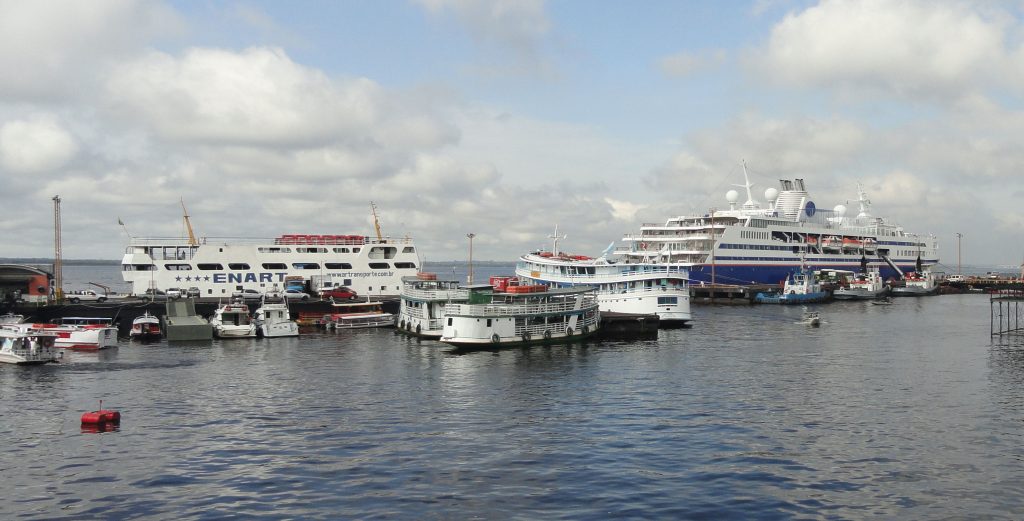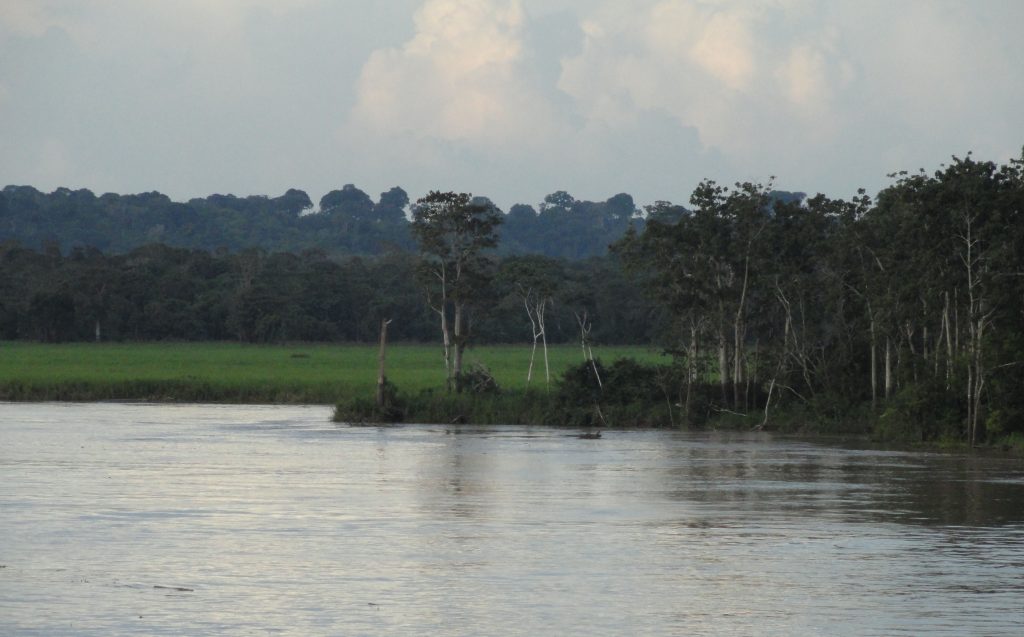
I spent two days and two nights sailing up the Amazon with the Semester at Sea. Most of my waking time was spent talking to students. They kept me fully scheduled, which is how I like it. It was lots of fun to interact with the clever students and professors. They also have a group called “lifelong learners,” who are retired people who want to cruise in a learning environment.
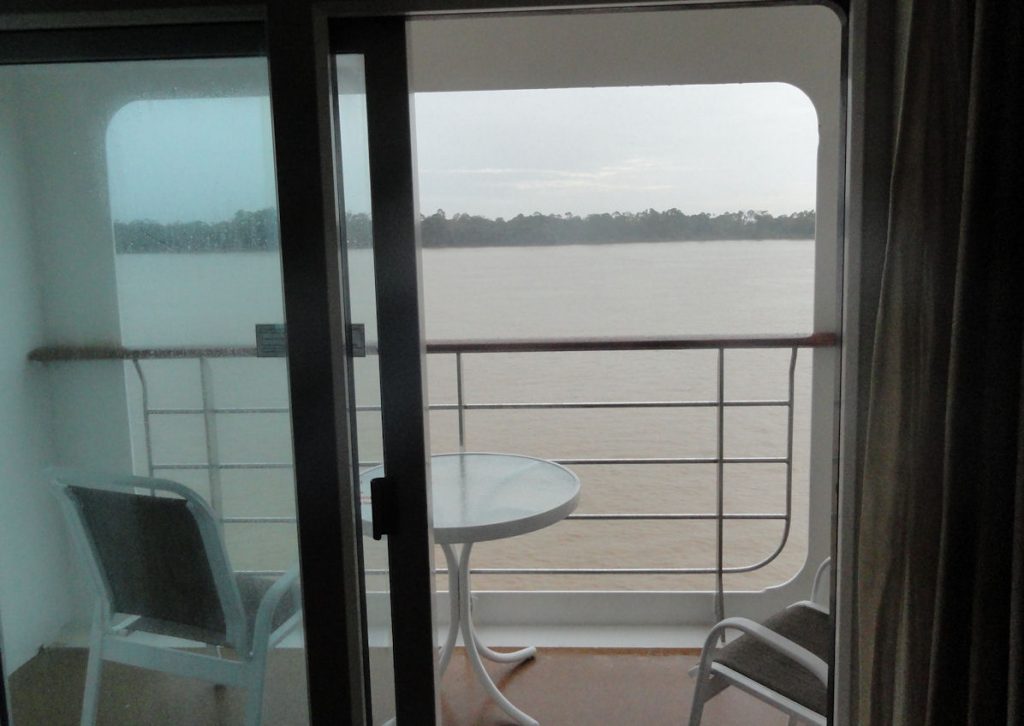
But I did have some time to myself and I spent lots of that free time just looking at the river and thinking about how interesting it was just to be on the Amazon. You can see my balcony in the picture above. It was nice to sit out there. It is humid, but fresh on the river. The Amazon – the word conjures up all sorts of feelings and images. It was interesting and a little scary to look out over the river in the midnight darkness. It is so empty out there, as I mentioned in an earlier post. The picture up top shows a beautiful scene. Beautiful from a distance. That green in the front is not grass. It is a type of reed. You could not walk through it.
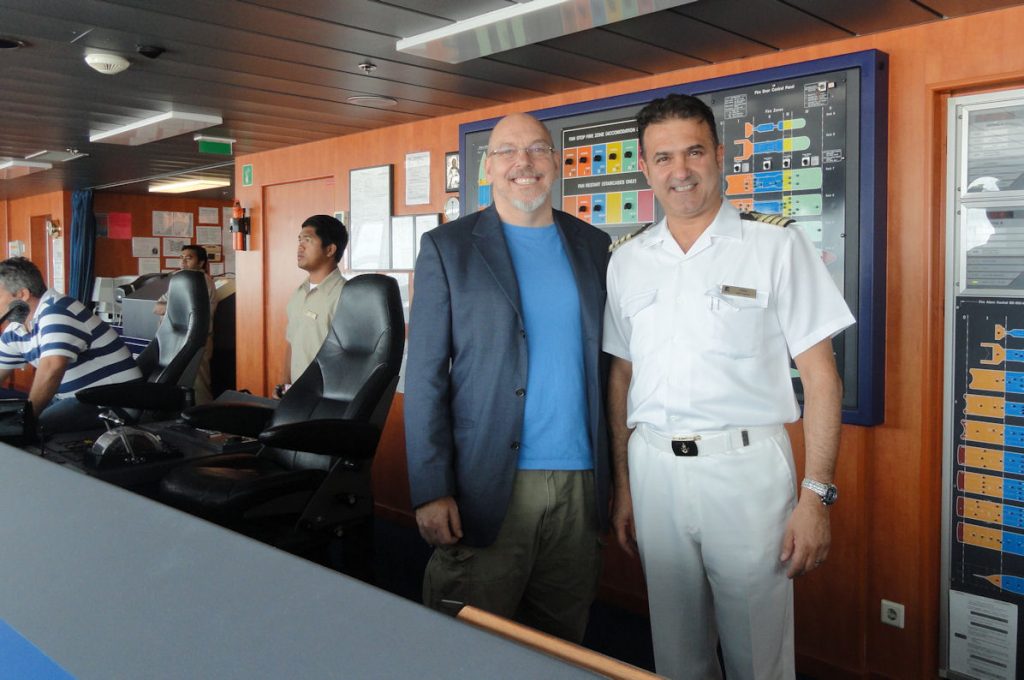
During the day you can see that the water is the color of coffee with cream. The silt does not sink out. There is a lot of other stuff floating. It is mostly branches and floating weeds, but I also saw whole trees and what looked like a dead cow. The dead cow made me feel more confident about the water. I figured that if a dead cow could float unvexed down the river there could not be that many piranha.
I was told that the water was low, even though it looked like the forest came right to the shore and was only a few feet above the water. Evidently in the high water time the river goes into the forest and you can see the tops of the trees reaching out of the water. That would be interesting. It is hard to believe that the river could be much wider, but it can.
As far as famous rivers go, however, the Amazon is a little monotonous. The land along-side is almost uniformly flat. You get a lot more variety on the Rhine. The Nile has cataracts. I don’t know the Mississippi except in Minnesota & Wisconsin, but it also has more bluffs and variety. The interesting thing about the Amazon is the water itself not only the sheer amount of it but also its composition.
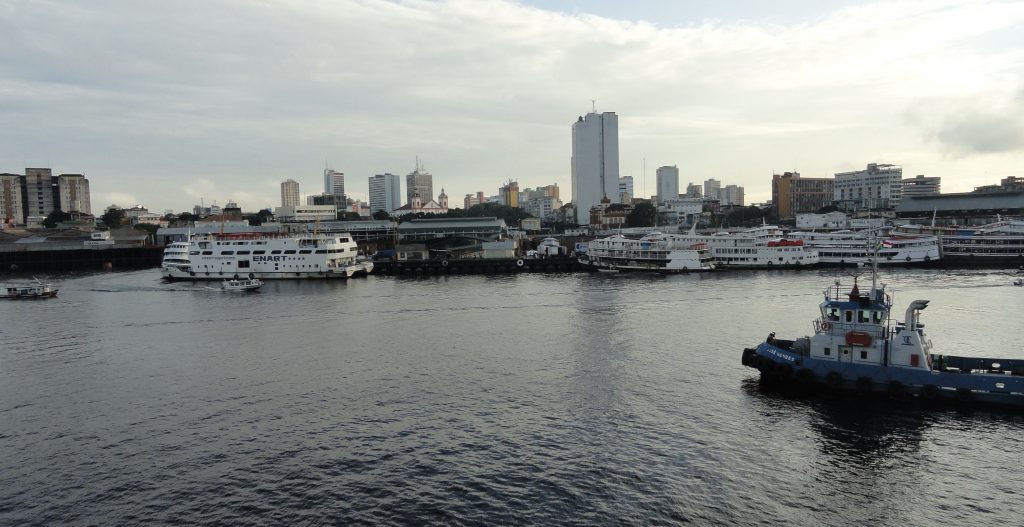
The Amazon is formed when the Rio Solimões meets the Rio Negro outside Manaus. The Solimões is cloudy and coffee & creme colored, as is the Amazon downstream. The Rio Negro, as its name implies, is black. Above is Manaus from the Rio Negro. Below is a ferry stop on the Rio Solimões.You can see the difference. The waters meet but don’t immediately mix, instead running side by side for several miles. I did not see this, since the ship crossed this at night while it was still dark. I woke up to see that the color of the water was black, as we were heading up the Rio Negro toward the Port of Manaus. It was also dark when we passed Santarém the night before. This is where the Rio Tapajos meets the Amazon. The Tapajos is supposed to be turquoise colored. I will have to wait to see that some other time.
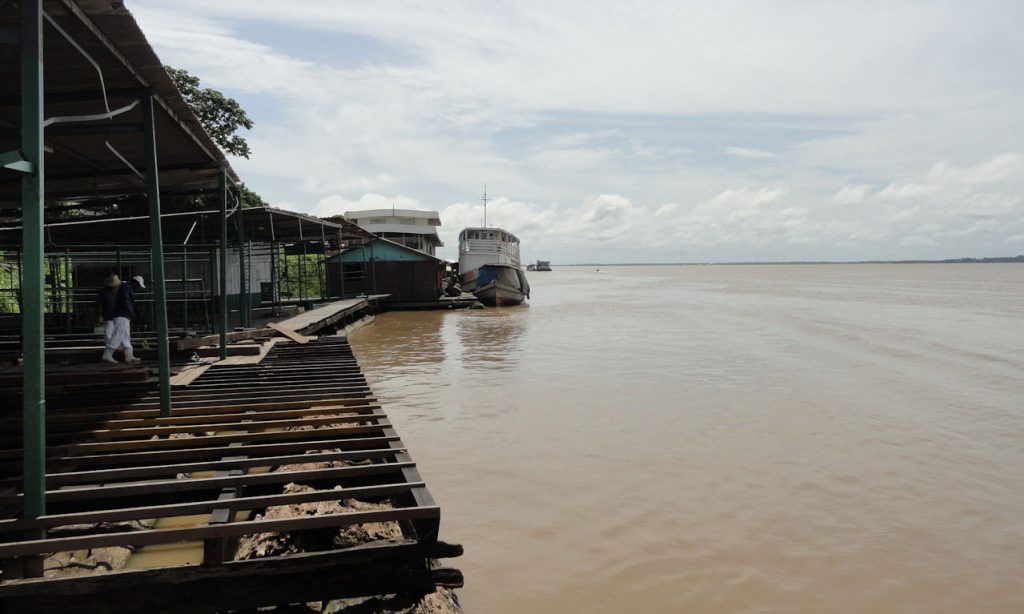
We did cross the new bridge in Manaus across the Rio Negro. I will write a little more about that later. Suffice to say now that on the other side we caught up with the Solimões. The Amazon takes its look from this river. The Rio Negro & the Tapajos just give their water and soon lose themselves.
